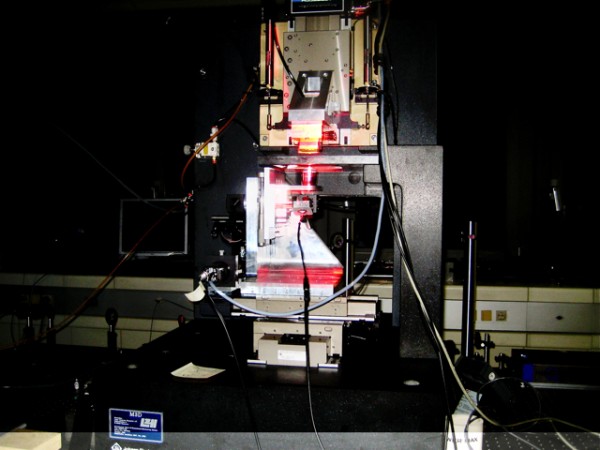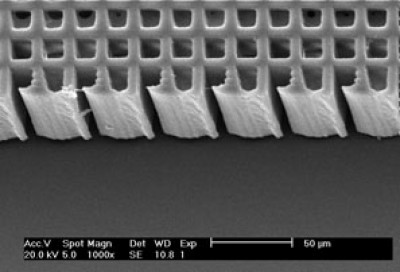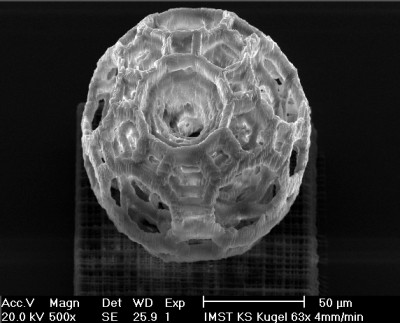Applications of Ultra-short Lasers in Material Science
Multi Photon Modification of Materials
A cooperation with Institut für Angewandte Synthesechemie (Prof. R. Liska) and
Institut für Werkstoffwissenschaft und Werkstofftechnologie (Prof. J. Stampfl ) of the Vienna University of Technology
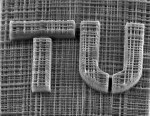
3-d-Machining of Materials
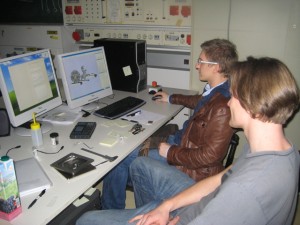 With the development of NIR ultra-short pulsed laser systems in the past few years, Two-Photon Absorption (TPA) in molecular systems has attracted much attention of researchers due to its potential applicability in the field of future photonics such as 3D optical data storage, photonic crystals, photodynamic therapy, two-photon induced photo- polymerization (TPIP) and many more. Among many other applications, the development of new organic materials for TPA is a promising area of research.
By means of TPIP, it is possible to produce complex “real” 3D structures with a theoretical spatial fabrication resolution below the diffraction limit of the used wavelength (down to 120 nm). These parts can be used e.g. in polymer-based photonic and micro-electromechanical devices (MEMS), which are beyond the capabilities of other (linear) structuring methods. Optimized photo-initiators (PIs) are essential for nicely shaped structures fabricated by means of TPA based methods.
Representative examples realized in the Institute of Applied Synthetic Chemistry at the Vienna University of Technolgy are polymer based optical waveguides by a local change of the refractive index by means of TPIP and synthesized PIs based on a triple bond containing cross-conjugated D-π-A-π-D lead structure with an absorption maximum at around 400 nm.
With the development of NIR ultra-short pulsed laser systems in the past few years, Two-Photon Absorption (TPA) in molecular systems has attracted much attention of researchers due to its potential applicability in the field of future photonics such as 3D optical data storage, photonic crystals, photodynamic therapy, two-photon induced photo- polymerization (TPIP) and many more. Among many other applications, the development of new organic materials for TPA is a promising area of research.
By means of TPIP, it is possible to produce complex “real” 3D structures with a theoretical spatial fabrication resolution below the diffraction limit of the used wavelength (down to 120 nm). These parts can be used e.g. in polymer-based photonic and micro-electromechanical devices (MEMS), which are beyond the capabilities of other (linear) structuring methods. Optimized photo-initiators (PIs) are essential for nicely shaped structures fabricated by means of TPA based methods.
Representative examples realized in the Institute of Applied Synthetic Chemistry at the Vienna University of Technolgy are polymer based optical waveguides by a local change of the refractive index by means of TPIP and synthesized PIs based on a triple bond containing cross-conjugated D-π-A-π-D lead structure with an absorption maximum at around 400 nm.
First results
Three dimensional polymer structures
The following movie shows the TPA (Two-photon-polymerization) process in action
(If Flash is installed JavaScript is activated, you can watch a video inside this web page.)
— -Wolfgang Husinsky 2009-03-23 09:48
